Chapter 5, Part 2
Known as the “Middle Kingdom” in Mandarin, China has always projected its image as the center of the world even long before the modern People’s Republic of China was formed. Prior to the creation of the Communist state as well as the Republic of China – present-day Taiwan – Greater China was ruled by successive dynasties dating back to the second millennium BC with constantly moving boundaries as powers rose and fell. Being one of the oldest civilizations in Asia, Chinese cultural influence is palpable beyond its borders, across East and Southeast Asia, and parts of South Asia. The hardworking Chinese are known for their entrepreneurial spirit which helps them not only to survive in foreign lands, but also to thrive economically.
Traveling across Southeast Asia today – a melange of different peoples from a multitude of cultural backgrounds – one might not instantly recognize traces of Chinese influence in this part of the world. However, to understand the long process of acculturation between Chinese and local cultural elements one only needs to look at the wide array of dishes in the region, from a bowl of laksa in Singapore to curry mee in Penang (Malaysia), tahu telur in Central Java (Indonesia), and the humble Shan noodles in Myanmar.
More than a thousand years ago, the taste buds of the people in Java were familiar to several native ingredients only. However, over the course of centuries as Chinese merchants began arriving in the archipelago lured by the lucrative spice trade, new plants from the north also found their way to Southeast Asia. Garlic and soybean were among the ingredients successfully introduced to the people of Java which would gradually become an integral part of Javanese cuisine.
As soybean gained popularity among the locals, it became widely cultivated, ensuring its abundance on the island. In the 18th century, a new technique was invented to create a concoction of soy sauce so rich and sweet it has now become an essential part of Javanese cooking. Kecap manis, Indonesian sweet soy sauce, is made by adding palm sugar – also introduced by the Chinese – and other ingredients, creating a condiment which is more viscous than other types of soy sauce. Prior to the creation of kecap manis, keluak (Pangium edule) was exclusively used to give certain dishes an intriguingly black tinge.

Asam Laksa at Air Itam, Penang’s Signature Dish, Made from Mackerel, Tamarind, Shrimp Paste and Other Ingredients
Not only kecap manis, the availability of soybeans in large quantity in Java had inspired the locals to create a new technique to enjoy the beans. Tempe (also known as tempeh outside Indonesia) is made by fermenting soybeans using a type of fungus (Rhizopus oligosporus) which thrives in Java’s hot and humid climate. As opposed to tofu’s smoothness, tempe provides a variation of texture since the mycelia-covered soybeans remain intact.
Apart from garlic, soybean and palm sugar, the Chinese also introduced noodles and the wok – a versatile round-bottomed cooking vessel used to stir fry, deep fry and braise, among other techniques. The wok became so popular it is now easily found in kitchens across Southeast Asia, from fancy restaurants to home kitchens. Numerous dishes have been created by adding local ingredients and spices to otherwise Chinese traditional recipes, a key aspect of Peranakan culture in Singapore, Malaysia and Indonesia. When James and I were in Penang, we joined a cooking class by Pearly Kee – a fifth-generation Nyonya (woman of an ethnically mixed community) who’s married to an ethnic Indian Malaysian – who introduced us to some of the island’s Peranakan dishes. Making hong bak was a revelation for me as its taste, textures and color reminded me of a similar dish in Java called semur. Brought by Hokkien people who came to Southeast Asia mainly from what is now China’s Fujian Province, both dishes have sweet soy sauce and nutmeg as key ingredients, a testament to the cultural assimilation of Chinese immigrants in the region.
However, Chinese influence didn’t stop in Southeast Asia. Until the 13th century, Chinese merchants still dominated spice trade in the archipelago that is now Indonesia. From the epicenter of the Spice Islands, they made stops in Sulawesi, Borneo, and Java, before sailing through the Strait of Malacca and eventually reaching the spice market on the Malabar coast (in present-day Kerala). The Chinese fishing net and wok are among the items introduced from China to the southern part of the subcontinent. Known as cheena chatti, “Chinese pan”, it has become an important cookware in this part of India.
The Indians, on the other hand, also introduced a fair share of new spices to the east, including pepper. Zheng He’s treasure voyages helped boost the trade of this particular spice in Sumatra, nurturing closer ties between India and the archipelago. The Indians, however, were no strangers to the Sumatrans, Javanese, and other people in Southeast Asia as they were the ones who introduced Hinduism and Buddhism to the region in the first millennium AD. With new ingredients coming from both China and India, Southeast Asian cuisines would evolve into something people today are more familiar with.
Click here for the full list of stories from the Spice Odyssey series.







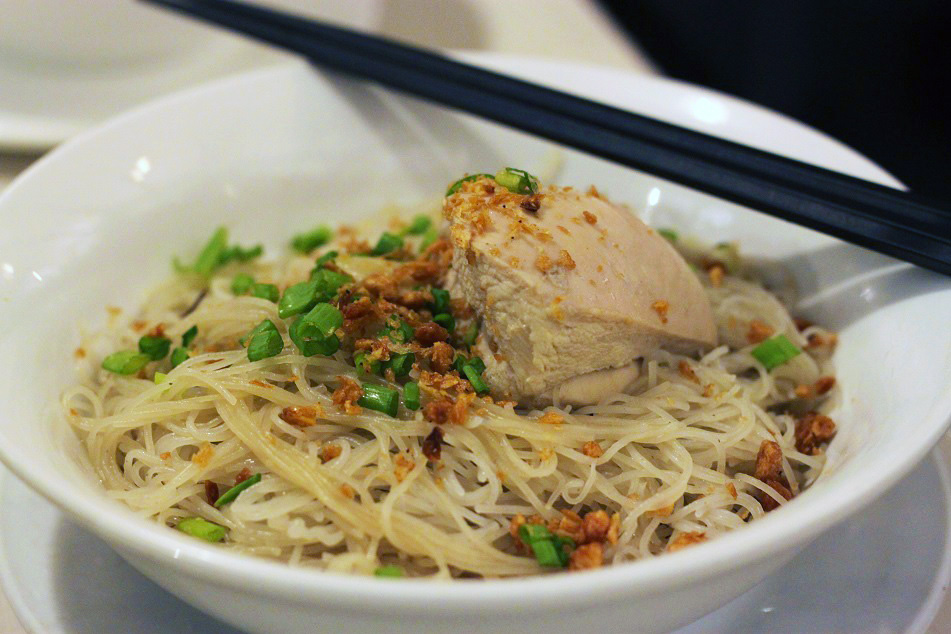

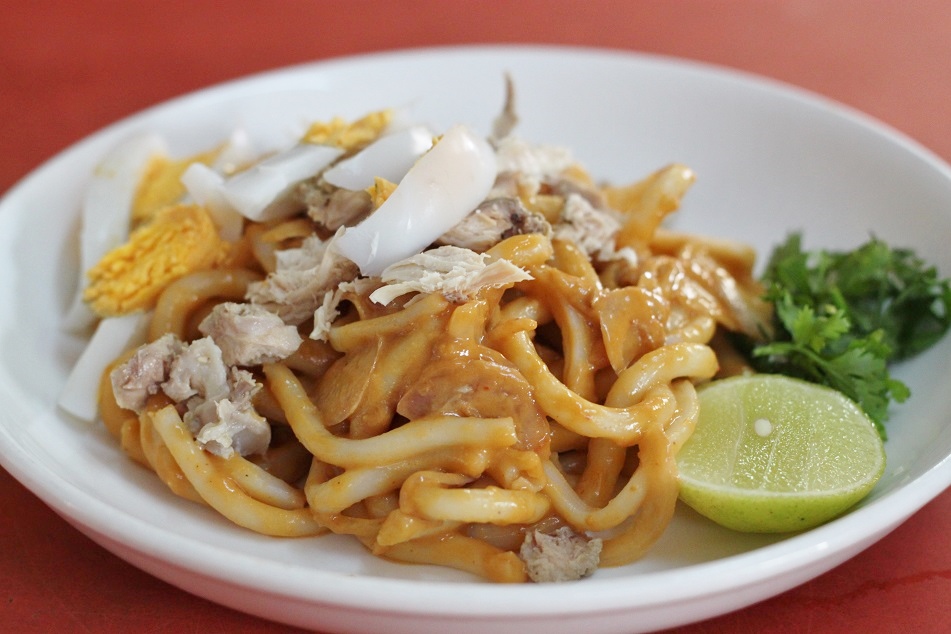

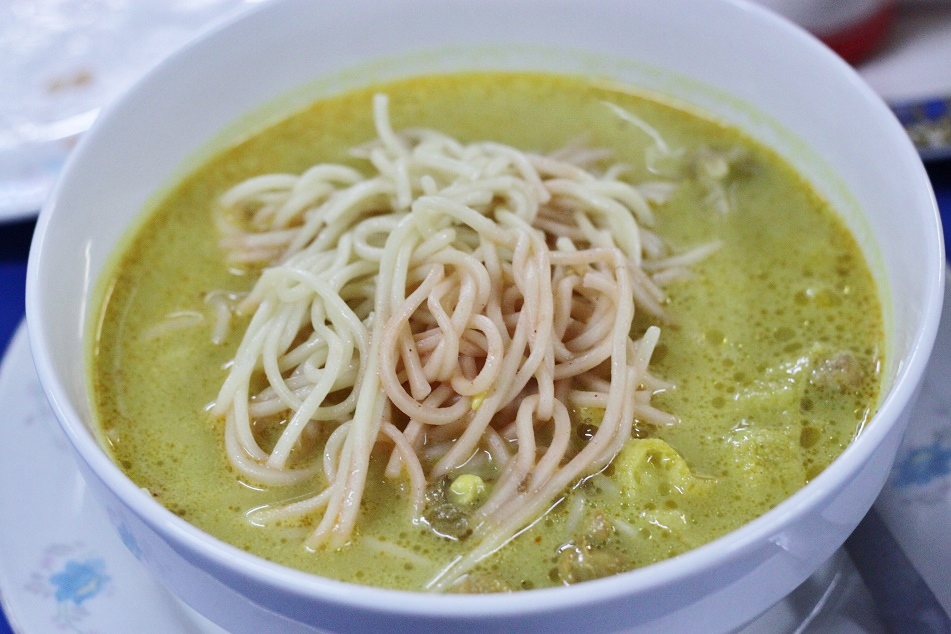



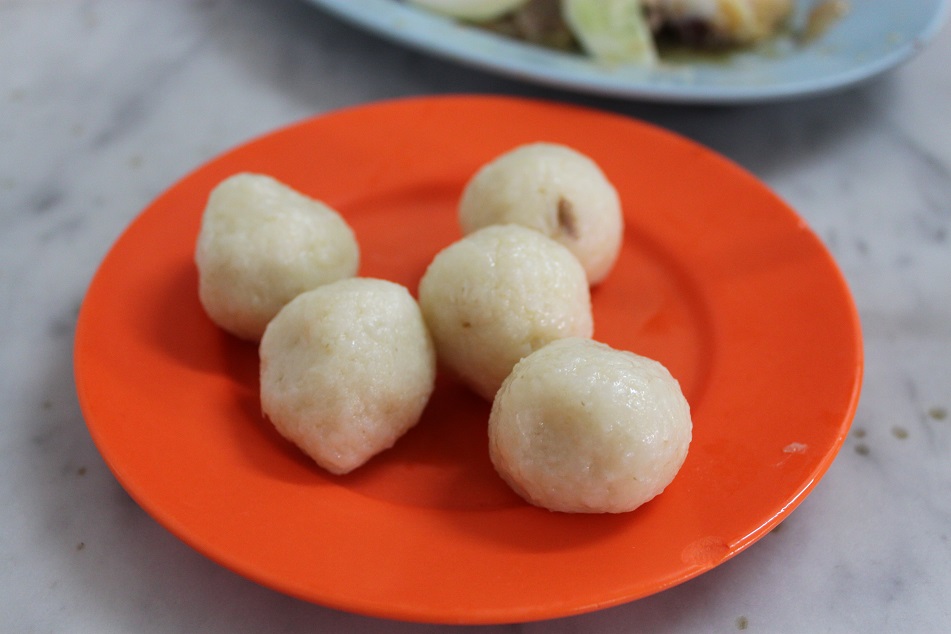


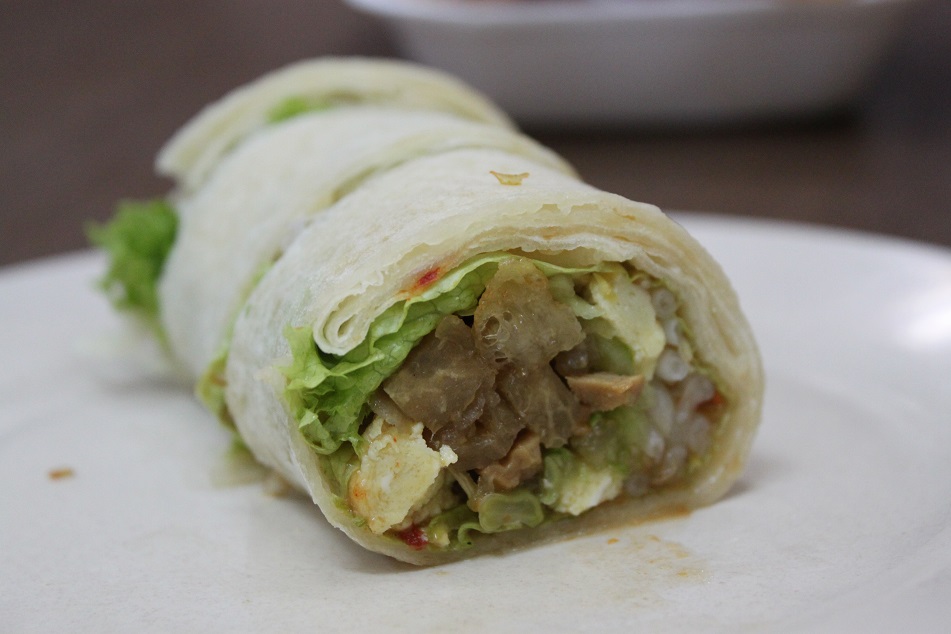



pagi-pagi begini lihat yang segar2 : ) hehehe
LikeLike
Sengaja biar seger dan melek. 🙂
LikeLike
apalagi yang belum sarapan : )
LikeLike
Lihat deretan foto-foto makanan di atas bikin saya ngiler, Bama. Sampai panik cari pangsit goreng buat teman baca tulisan ini hahaha. Pengaruh besar cita rasa yang dikenalkan dari Tiongkok memang sudah jadi bagian dari kuliner di belahan Asia lainnya, tak terkecuali Indonesia. Kulturisasi budaya di Indonesia menciptakan Chinese food yang semula didominasi daging babi diganti berbahan dasar daging ayam, bebek, dan ikan. Di tulisan sebelumnya sudah pernah ulik perbedaan kuliner pengaruh Tionghoa di Jawa Barat, Jawa Tengah, dan Jawa Timur, belum?
LikeLike
Hahaha, yakin cuma pangsit goreng aja? Bakmi goreng, siomay, sama baksonya belum. 🙂 Dari dulu memang orang-orang dari Tiongkok banyak yang merantau ke berbagai penjuru dunia, entah sebagai saudagar maupun pekerja kasar. Hasilnya banyak sekali budaya Tiongkok (baik itu dari masyarakat Hokkien, Hakka, Canton, Teochew, dll) yang berakulturasi dengan budaya tempat dimana mereka menetap. Nah, waktu saya melakukan perjalanan yang enam bulan itu memang tidak secara spesifik akan mengulik perbedaan pengaruh Tionghoa di kuliner Jawa Barat, Tengah dan Timur sih. Tapi berhubung kamu singgung, saya jadi penasaran banget Halim! Secara umum, perbedaan ketiganya gimana ya?
LikeLike
Pagi-pagi bikin lapar mas Bama. Jadi pengen makan yamin.
LikeLike
Nah, masalahnya tukang yaminnya udah buka belum jam segini? Hehe..
LikeLike
😂
LikeLike
You make me hungry Bama. Great photos!
Alison
LikeLike
Writing this also made me hungry actually. Thanks Alison!
LikeLiked by 1 person
Man, I’m hungry after looking at those pictures 🙂
LikeLike
Sorry for that! 😀
LikeLiked by 1 person
Ameiii
LikeLike
A delicious post! 😉
LikeLike
Thanks! Actually, even replying to the comments makes me hungry! 🙂
LikeLiked by 1 person
Jadi lapar euy liat ginian
LikeLike
Pas banget long weekend, waktunya makan banyak. 🙂
LikeLike
Torture looking at these photos — my mouth’s watering. There are an abundance of: Japanese, Korean, Vietnamese, Chinese and Thai restaurants in my locale, but sadly the area lacks restaurants to savour all those wonderful dishes I experienced during my Indonesian and Malaysian visits. A great post (as always)
LikeLike
Sorry for the trouble! 🙂 I know there are many Indonesian restaurants in the Netherlands (where a lot of Indonesians and people of Indonesian descent live), also in Hong Kong where hundreds of thousands of Indonesian migrant workers live. So I guess the lack of restaurants serving Indonesian food in one city is partially caused by the lack of Indonesian diaspora there. Thanks Malle.
LikeLiked by 1 person
You’re right — even though I live where over one third of our population have Asian origins
LikeLike
Bama, I am perennially impressed by the the level of research and resulting detail that you put into these posts. I think of food when I travel as simple sustenance and only occasionally do I consider what spices or other ingredients might be in there, where they come from, or what I like about them. I do like to cook, so I am familiar with what spices add to a dish, but I have no clue about their origins, either geographical or cultural, so your posts are wonderfully informative!
LikeLike
Until a few years ago, I always thought that chili, peanut, guava, and so many other things Indonesians consume regularly were native to Indonesia, or Southeast Asia. Only after I started planning that long trip back in 2015 did I begin to learn more about all of this. It’s been a really eye-opening experience. Now whenever I cook or eat out, it’s hard not to appreciate the spices and other ingredients that make a dish so tasty. Thanks for your encouraging comment, Lex!
LikeLiked by 1 person
Amazing post! Some of the dishes are spectacular!
LikeLike
Thanks! Not only do they look spectacular, but they also taste so good. I can return to some of those places just for the food.
LikeLiked by 1 person
Bama I am left salivating at your post. I am not a Food or by any means and eating often a bit of a chore more than a pleasure. Your research into the history and influence of the dishes is fascinating. Wonderful photos too!
LikeLike
Thanks Sue! Well, when you do come to Asia, you really shouldn’t miss the food. See how those different spices tickle your senses.
LikeLiked by 1 person
All over Southeast Asia you see the Chinese temples and people of Chinese descent, but I didn’t realize the food was so heavily influenced. Thanks for enlightening me, and thanks to the Chinese for the wok and the spices!
If you drive across the USA, you will see Chinese restaurants in small towns all across the country.
LikeLike
Until a few years ago, I didn’t realize that a lot of the street food I had regularly was introduced by the Chinese. Food has always been a major part of Chinese culture, so it is natural for them to bring along their dishes as they explore the world. Two or three years ago, I realized that in most weekends I’ve been eating noodle-based dishes only. Thanks to the Chinese!
Speaking of the Chinese, I admire their work ethic. When I was in Dili, East Timor during Christmas in 2013, the only shop open on Christmas Day was owned by a Chinese. A famous Indonesian writer who went to Port Moresby, Papua New Guinea wrote that most businesses were owned by the Chinese. Nothing deters them from doing business, really.
LikeLike
Bama, your food photos are excellent and look totally professional. It seems that usually my food photos turn up boring and indistinct, and I’ve always thought that it was poor lighting. Did you use special lighting? Also, I just checked a Malaysian cookbook out at our local library and it had an entire chapter on sambals, and one of the primary ingredients was Kecap manis, which I’m trying to find somewhere in town. When we visited Bali we took a cooking class which involved a trip to market to buy ingredients, as well as making sambal and cooking a meal. It was not only a fun experience, it was a delicious introduction to Indonesian food. ~James
LikeLike
Really appreciate your kind comment, James. I always try to find a spot close to a window, or door, or anything that allows natural light to come through. But there were times when I wasn’t so lucky and most of my food photos turned out dark and blurry. In Indonesia, sambal kecap (made with kecap manis and chili) is usually a substitute for peanut sauce in sate (satay) or sop (Indonesian chicken or beef stew). I haven’t tried the Malaysian version though, but I remember some of the sambals I had in the country were more tangy than what we have in Indonesia. Taking a cooking class when we travel really is a good experience to get to know better of the local culture, philosophy, and way of life. But as you might have guessed, Indonesian dishes are as varied as the languages spoken in the country.
LikeLike
Incredible! I am hungry! Great post!
LikeLike
Thanks John! I hope you didn’t read this post on an empty stomach. 🙂
LikeLike
I got so hungry looking at all these pictures!!!! I miss Indo food a lot … and in the Maldives we used to have ‘momo parties’ with the Nepaleese staff preparing dumplings . So many memories! Thx
LikeLike
Hi Julz. I believe it must be really hard, if not completely impossible, to find Indonesian food in Mauritius. Any particular Indonesian dish(es) you miss the most? Whenever I travel abroad for more than just a few days, I usually miss my chilies! Momo parties sound really fun, prepared by none other than the Nepalese themselves. Thanks for sharing your thoughts and memories!
LikeLiked by 1 person
i love Tempe!! not the deep fried one, but more like pan fried one with sambal. Sambal matar, Nasi kuning, soto yam yum! sup bontut – you name it i miss it! haha I used to eat in this little Warung in Semyniak (i think it was Javanese food) – like 3 times a week 🙂 they had this dish of baby octopus in black sauce (no idea what the name was but OMG was it good!!!)
LikeLike
Ah, sambal goreng tempe! It’s among the most popular side dishes in Indonesia. Actually it was only four years ago when I had sambal matah for the first time. It was perfect with fried fish! Baby octopus is not a traditional Javanese dish, but the black sauce (sweet soy sauce, I assume?) is. Was it grilled and skewered?
LikeLike
The octopus was like a stir fry. maybe it just was a sauce with kecap manis – i have no idea! Sambal matah in Bali is just everywhere, the flavours are awesome! and yes great with fried fish. I have an indoneese friend she would have it with everything.
LikeLike
oops sorry had a little internet problem there!!! Anyways. I haven’t had indo food since Sept. 2014 – not that I am counting or anything – and it wasn’t like even super super good, as it was the Indo restaurant in Male (Maldives) – they do make their own tempe there though.
LikeLike
No worries. Well, that’s a reason for you to come back to Indonesia. 🙂 As for tempe, I feel like it’s becoming more and more popular in recent years. I think it’s even used in Masterchef U.S. for one of its challenges. I think I like tempe the most when it’s dipped in batter and fried until it turns gold but not dry.
LikeLike
You have me craving oyster omelette now.
LikeLike
Oyster omelette would be even better with fresh vegetables, I can imagine.
LikeLiked by 1 person
😆 Yes they would!
LikeLike
Mmm! It’s just gone past 10 o’clock in the morning over here, and I’m licking my chops at the sight of all that beautiful food, which I absolutely love. As long as it doesn’t have nuts in them! 😉
LikeLike
Hope those dishes inspired you to have an Asian lunch today. 😉 As for peanut, in Indonesia we use it in a lot of dishes. But there are dozens or even hundreds of other dishes without peanut to choose from. So no need to worry.
LikeLiked by 1 person
OMG seeing these pictures in London is definitely akin to torture. Nice story, Bama!
LikeLike
Thanks for reading and sorry for the visual torture, Mira! I remember when I was traveling across western Europe for a month back in 2007, one thing I missed the most was Indonesian food. On one of the days my uncle, aunt, two other relatives and I spent in Brussels, we were served Indonesian dinner at the house of this person who worked at the Indonesian embassy. Having telur balado that night was an indescribable joy! So I can imagine how much you miss Indonesian food.
LikeLike
Pingback: Food Nationalism | What an Amazing World!
Bama, your food photography is top-notch and I have learned to better my own by watching how you do it when we travel. Actually I had no idea palm sugar was actually introduced to Indonesia by the Chinese – I always assumed that it was developed by the Javanese and Malays. My father often says his favorite cuisine of all is Malaysian… and by that he really means Peranakan. What I love about it is the fact that it seamlessly combines the best of both worlds, a perfect marriage of Southeast Asian ingredients and spices with Chinese cooking techniques. I doubt that I will ever find a curry mee as tasty as the one we had in Penang!
LikeLike
You’re too kind, James. Sometimes I do have a strong feeling as to which angle I should take the photos from. But some other times that feeling just doesn’t come. I used to think that palm sugar was invented in the Malay archipelago as well, until I read that book on the Indonesian food history. Peranakan dishes really are a reminder of what can be the outcome of acculturation — no wonder your father loves them so much. Speaking of that curry mee, I wonder if we could find out where the owner has moved so the next time we visit Penang we know where to go.
LikeLike
Uh yummy . I feel hungry now. It’s so delisious
LikeLike
Thanks for reading!
LikeLiked by 1 person
Yes you’re welcome;)
LikeLike
Reblogged this on Lazy Girl Blogging.
LikeLike